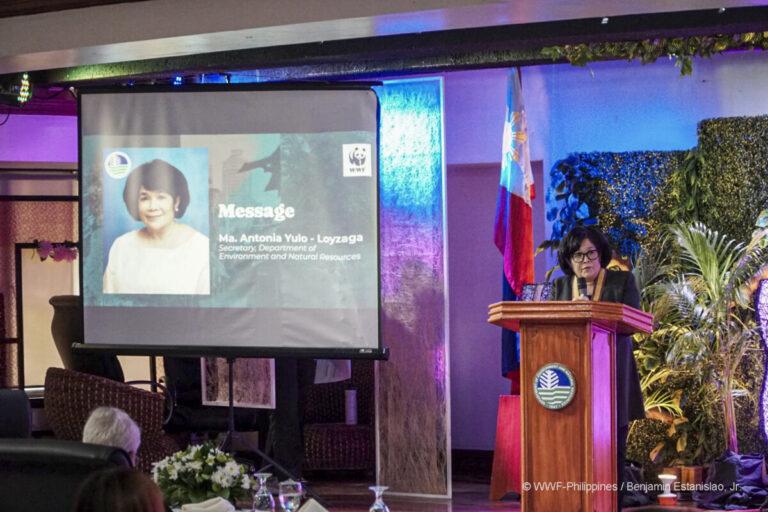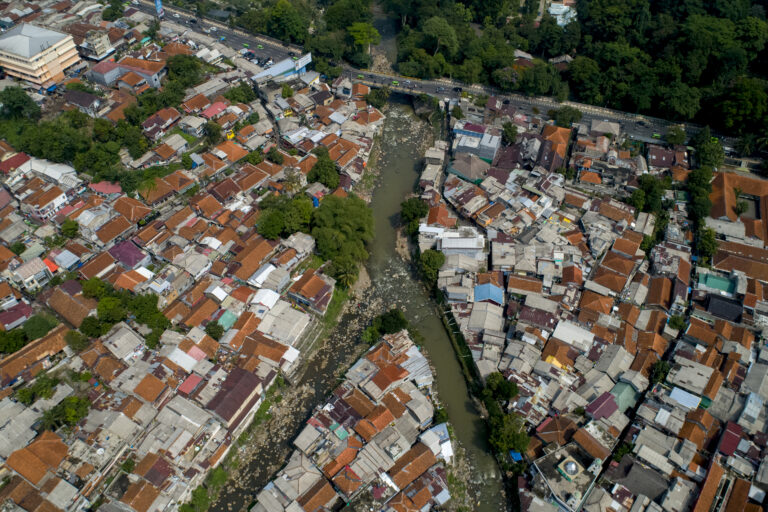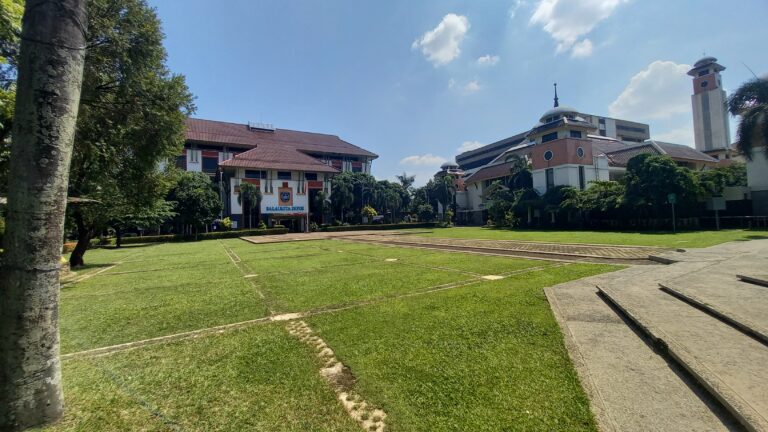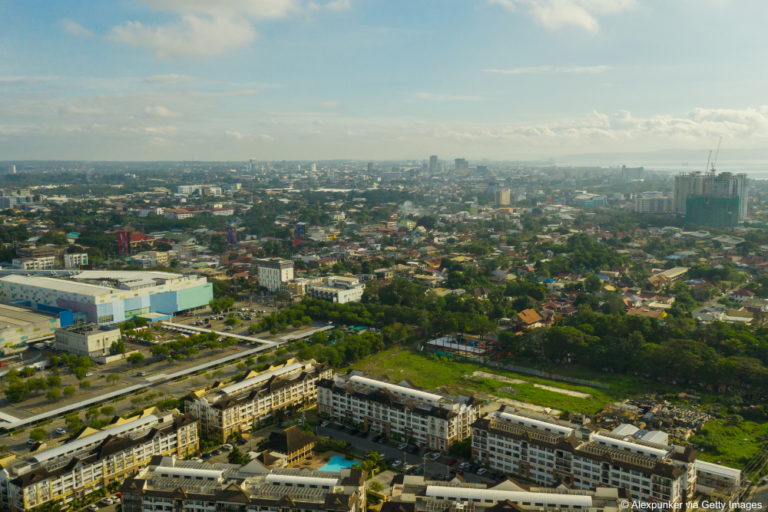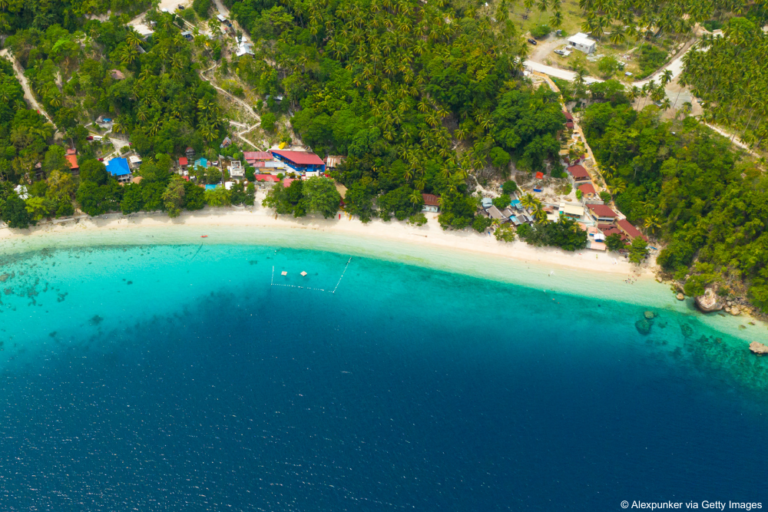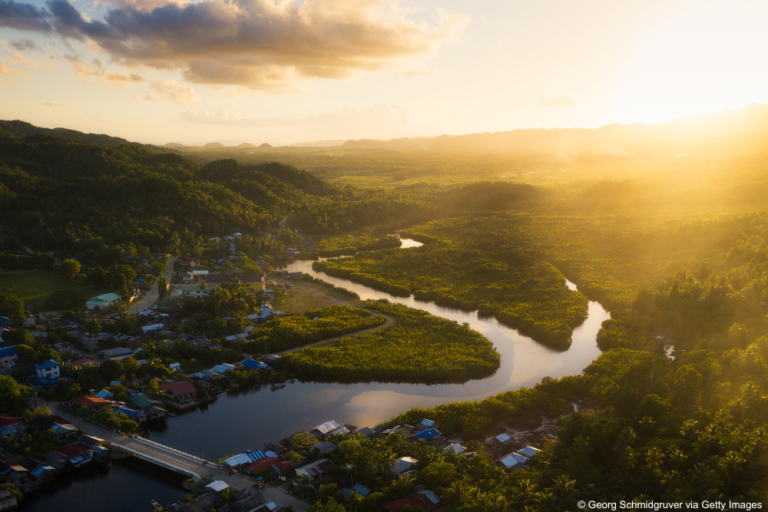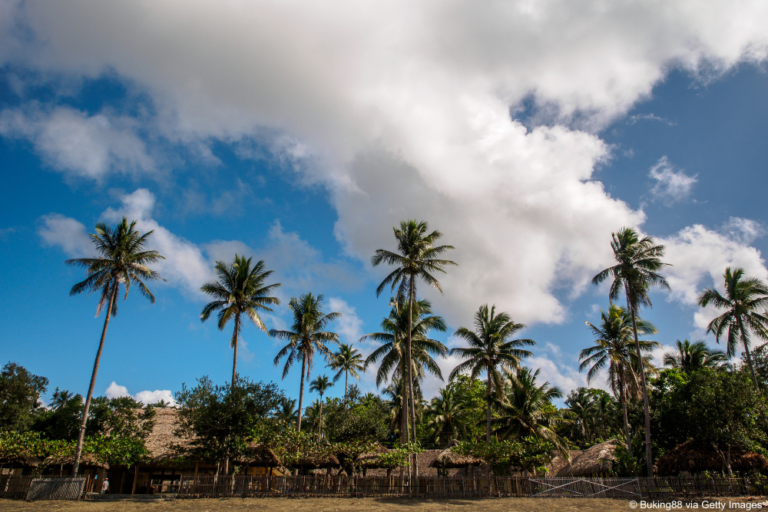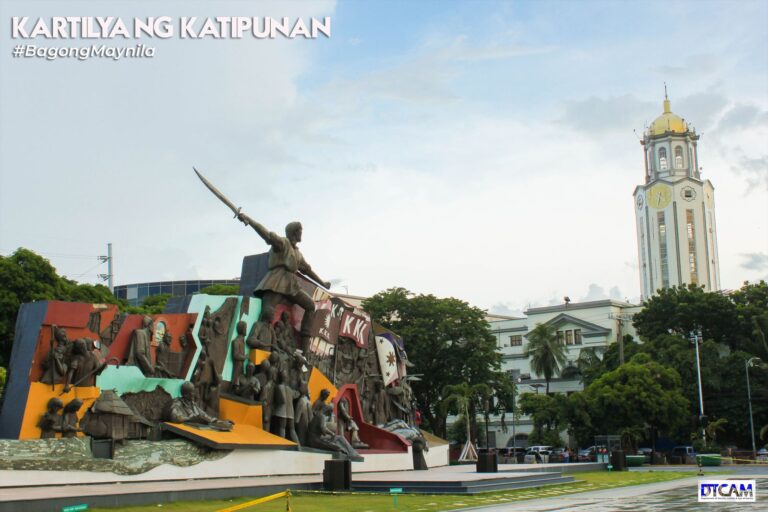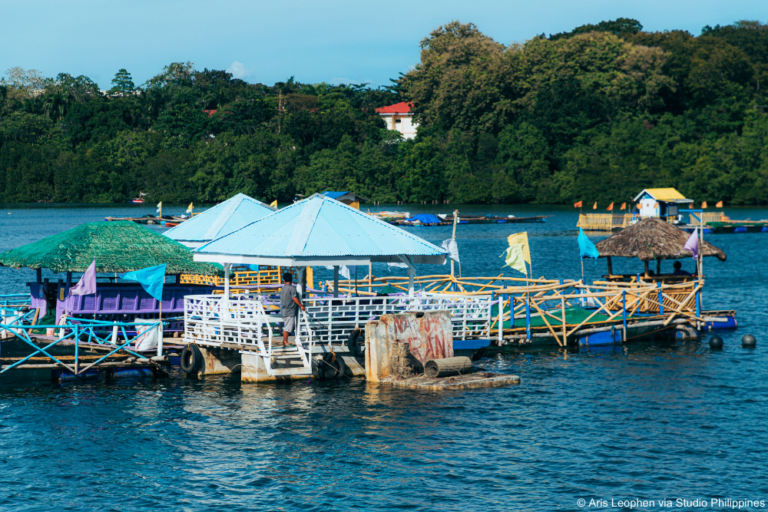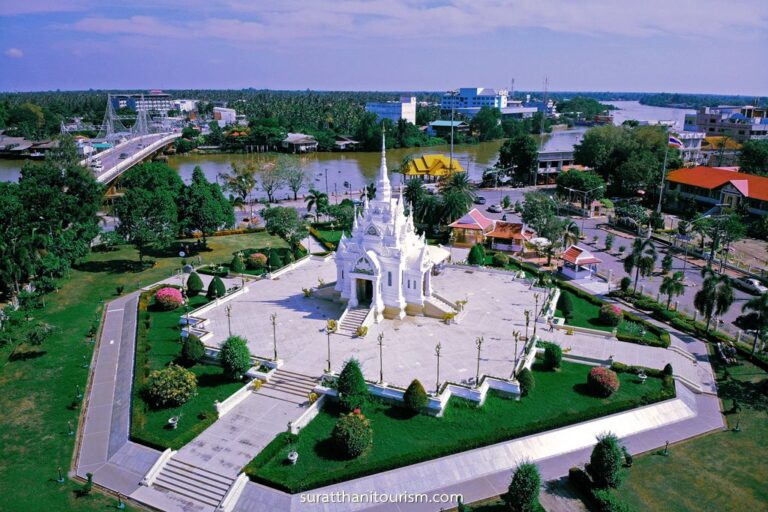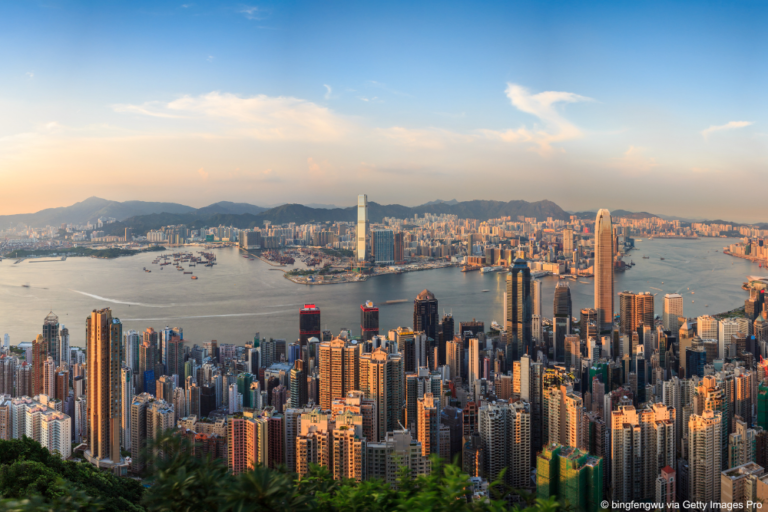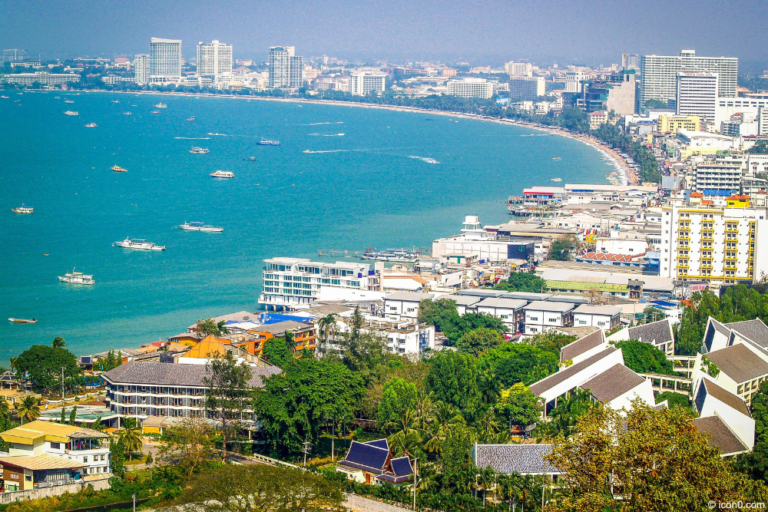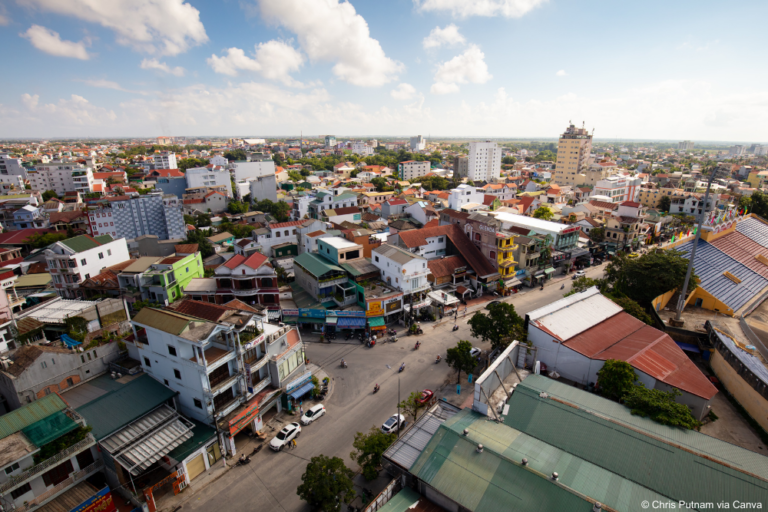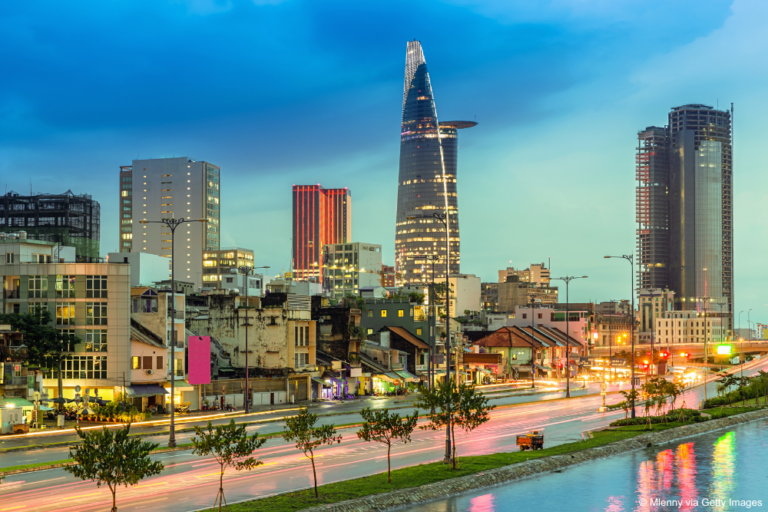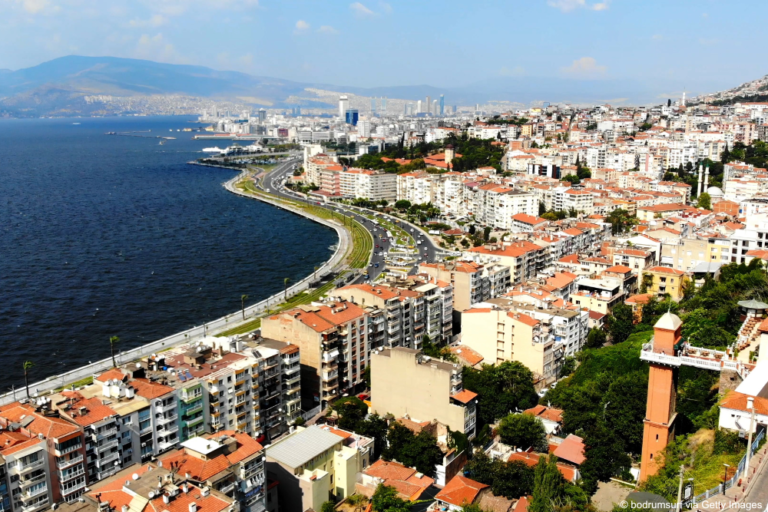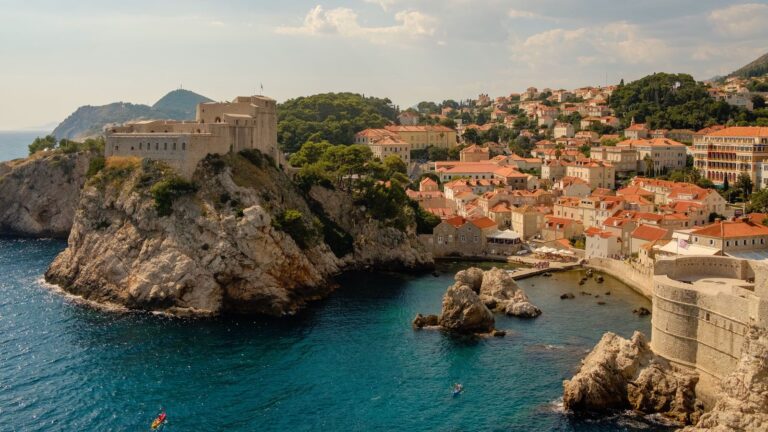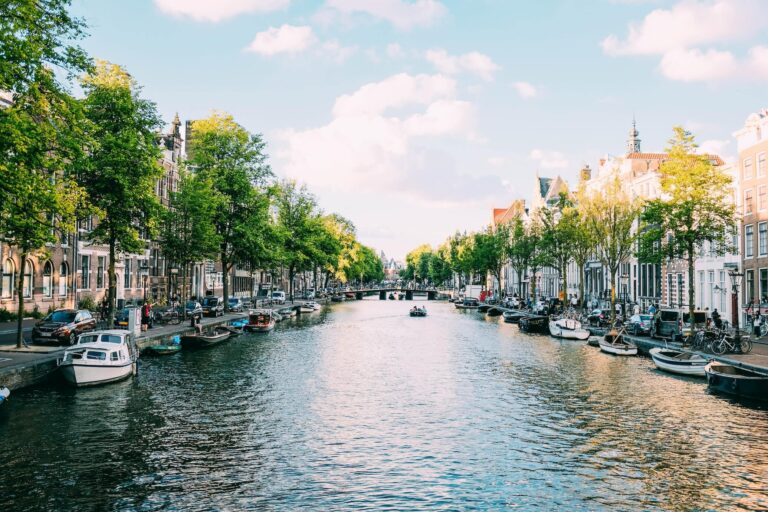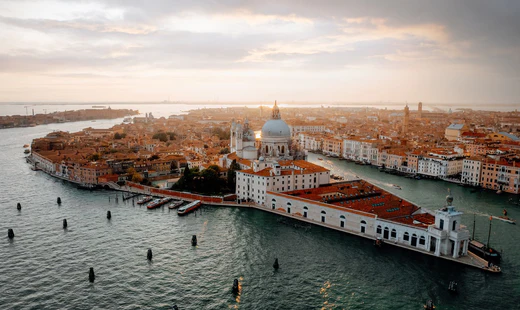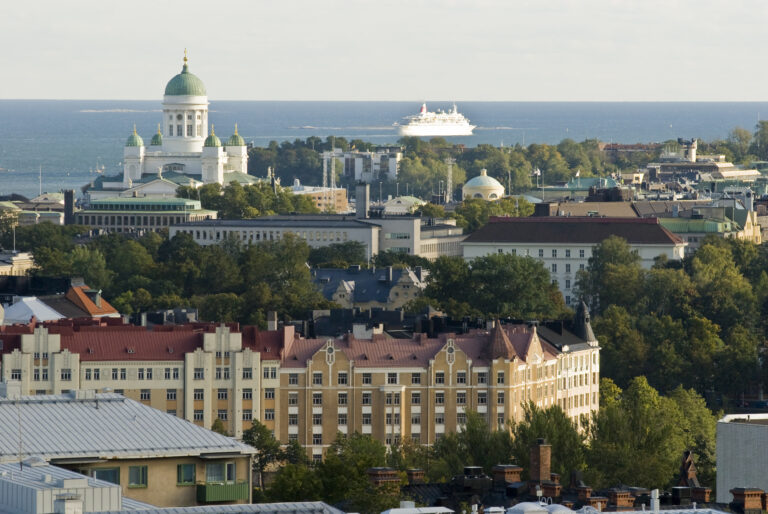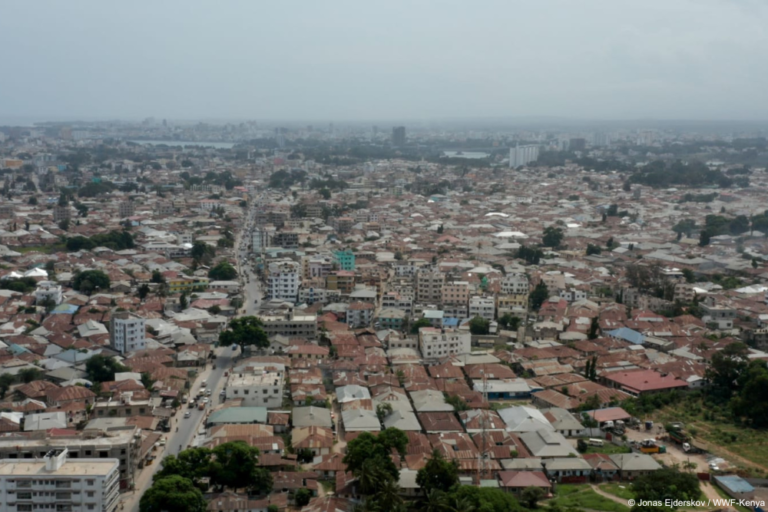Manila, the capital city of the Philippines, is on the island of Luzon and is part of the National Capital Region (NCR). It comprises 896 barangays, which are divided into 100 zones and further divided into 16 administrative districts, and six congressional districts. It had a recorded population of 1,858,221 in 2020 (Philippine Statistics Authority, 2021) and has a population density calculated at 73,920 persons/km2. Manila City’s port areas are found to be the most densely populated.
Manila City is considered a prime economic area, which makes it the go-to place for Filipinos from rural areas who are in search of better employment and living standard. This continuous influx of people resulted in unemployment and several urban dysfunctions including traffic congestion, build-up of slum areas, flooding because of clogged estuaries and sewage systems, and deteriorating public facilities. From an environmental standpoint, Manila City faces difficulty in biodiversity conservation and waste management.
However, like any other congested area, Manila city finds it difficult to have well-functioning Material Recovery Facilities (MRF) primarily due to the lack of space. As stipulated in RA 9003 or the Ecological Solid Waste Management Act of 2000, barangays should have at least 50 to 100 square meters of land dedicated to this kind of facility. Such is a difficult requirement to fulfill for Manila City as barangays are often congested and this will not allow room for MRFs to be built. This has led to the setup of Materials Recovery Systems (MRS) or make-shift bins for recyclables which often cannot accommodate the waste generation of the barangays they are located in. These MRS are considered temporary solutions to the lack of MRFs designated for each barangay and thus should be shifted to fully functioning MRFs. Add to that, according to the inputs from our consultations with the barangays, the lack of funds from the barangay development budget assigned to solid waste management, the lack of secondary markets for recyclables, and the absence of technical expertise in managing such facilities are also added challenges to building more MRFs in Manila City.
The Plastic Smart Cities project is working with Manila City to achieve the goal of least a 30% reduction of plastic pollution by 2024. There will be city-wide interventions but also specific geographical areas of focus, which will depend on the results of the validation and planning with city stakeholders. Manila City’s influential standpoint and political will make it a strategic PSC – TV Aksjonen project site in Metro Manila as this can provide a solid case for inspiring other cities and municipalities in the region (Caloocan, Las Piñas, Makati, Malabon, Mandaluyong, Marikina, Muntinlupa, Navotas, Paranaque, Pasay, Pasig, Pateros, Quezon, San Juan, Taguig, and Valenzuela) and potentially in the entire country to take necessary actions to address the plastic pollution issue in their respective cities.
Waste Analysis and Characterization Study (WACS) Results showed that the current waste generation rate (WGR) of the City is about 0.707 kg/cap/day while the disposal rate (WDR) is 0.425 kg/cap/day. Most of the generated and disposed of wastes in the city are biodegradables with food waste being the highest. Plastic bags, despite being lightweight, dominate the plastic waste composition of both generated and disposed of wastes. These low-value type of plastic is problematic because they often end up in landfills or in nature due to the absence of local processing technologies.
The results of the baseline study conducted during the Inception Phase show that about 116,292 tonnes of plastic waste are annually generated. A total of 86% or 100,099 tonnes of these generated plastic wastes are collected by both formal and informal sectors while the remaining 14% or 16,193 tonnes/year of plastics are considered unaccounted. These uncollected plastic wastes are leaked into the environment.
Nevertheless, about 24% of the total generated plastic waste is unmanaged. About 13% or 15,254 tonnes of plastic waste are leaked into water systems contributing to the clogging and polluting of estuaries and river systems, 10% or 11,100 tonnes are retained on land, and the remaining are burnt or found in storm drains. A significant number of potential leakages of plastics was identified from collection services and disposal facilities of about 2,969 tonnes and 8,887 tonnes, respectively. These disposal facilities such as the Vitas Marine Loading Station and the Navotas Sanitary Landfill are located beside water systems, allowing for plastic leakage.
Upon consultation with the city’s district offices, the project has identified 461 priority barangays broken down as follows:
- District 1, 116 barangays
- District 2, 41 barangays
- District 3, 43 barangays
- District 4, 71 barangays
- District 5, 143 barangays; and
- District 6, 47 barangays.
1. At least a 10% reduction in municipal solid waste generation
- Policy implementation
- Implementation of policies and legislation aimed at reducing and eliminating unnecessary plastics in the city.
- Development of toolkits for public officials to increase barangay-level government units’ SWM compliance.
- Awareness-raising activities
- Conduct of Knowledge, Attitude, and Practice (KAP) Assessments of target stakeholders, ranging from households, businesses, academic institutions, local government offices, and the informal waste sector.
- Development of a communication plan to accommodate the SWM communication needs of target audiences.
- Production and conduct of communication activities according to the communication plan co-designed with the target stakeholders.

Design Thinking Workshop conducted by WWF-PH;
attended by participants from different sectors
- Business sector engagements
- Identification of solutions for decreasing plastic waste in the business sector. Solutions may include but are not limited to the following: setting up of refilling stations, banning of unnecessary plastics, per request basis of plastics.
- Implementing solutions for plastic waste reduction in the business sector.
- Household training on solid waste management
- Improving household plastic waste collection through the conduct of solid waste management training for selected households from priority barangays.
- Deployment of trash bins to selected households and implementation of a waste monitoring scheme with barangay and district officials.
2. At least a 15% increase in the collection of uncollected waste
- Deployment of common trash bins to selected barangays
- Distribution of three (3) 40L trash bins per priority barangay and implementation of a waste monitoring scheme with barangay and district officials.
- Distribution of waste collection carts to barangays
- Partnering with fabricators in the creation of small waste collection vehicles to be distributed to barangays that expressed their need for such equipment.
3. At least a 15% increase in the collection of waste by collection services diverted from disposal
- Support social enterprise initiatives that will benefit informal waste pickers, women, youth, and other related sectors
- Identification of possible social entrepreneurial solutions to be implemented in Manila City through a market study
4. At least a 10% reduction in transported untreated waste
- Support existing Materials Recovery Facilities (MRF)
- Support improvement of existing and establishment of new materials recovery facilities

Materials Recovery Facility of Barangay 775
- Deployment and installation of waste utilization technologies
- Increase capacities of barangay personnel in charge
- Initiate market initiatives for plastic waste recycling
- Conduct of market study identifying market standards, needs, potentials, and barriers
- Provide support in product development and marketing of ready-to-scale-up local organizations supporting plastic waste recycling
- Identification of market opportunities for upcycled products
- Increase at-source plastic waste segregation
- Conduct of barangay solid waste management and household waste segregation learning sessions

Participants from the first installment of SWM Household Training
- Identification of model household segregators
- Provision of materials needed for household waste segregation and monitoring of results
- Pilot at-source solutions for managing food waste
- Identification and implementation of food waste reduction at-source
- Piloting solutions in utilizing and processing collected food wastes in Manila City
5. At least a 5% reduction of plastics entering water systems
- Deployment of common trash bins to selected barangays
- Distribution of three (3) 40L trash bins per priority barangay and implementation of a waste monitoring scheme with barangay and district officials.
- Distribution of waste collection carts to barangays
- Partnering with fabricators in the creation of small waste collection vehicles to be distributed to barangays that expressed their need for such equipment.
The Projects’ key plastic reduction targets and their corresponding activities are incorporated and visualized in the City of Manila’s Waste Flow Diagram as shown below:

City Ordinance 8282: Plastic Ban
The City Ordinance 8282 (CO 8282) is a very general blanket prohibition policy on plastic. The law prohibits business establishments from
- Using plastic bags as packaging for dry goods;
- Using plastic bags as secondary packaging for wet goods;
- Using polystyrene for all food and goods;
- Selling plastic bags as secondary packaging material or as primary packaging material for dry goods
- Disposing of unclean or wet plastic waste for collection.
The law also includes the following prohibited acts for food & commercial businesses and individuals:
- Selling and providing plastic bags to consumers as primary packaging materials for dry goods;
- Selling and providing plastic bags to consumers as secondary packaging materials for wet goods;
- Selling and providing polystyrene packaging as containers.
Environmental Code
Under the Environmental Code, plastics, although mentioned, are not considered in a holistic manner. First, biodegradable and compostable under this Code are made synonymous with each other. Second, all plastics regardless of type are classified as non-biodegradable and treated as residuals without any value. Third, Manila’s Code does not handle fishing gear effectively.
It is recommended that the E-Code be amended to change these definitions, classifications, and exclusions. Due to the grouping of all plastics as non-biodegradable, there would be valuable plastic that can be recycled. The E-code must also be amended to include microplastics in the soil, air, and water of the City. The E-code must be aligned with sustainable consumption and production plans to ensure effective management of plastics both upstream and downstream.
The E-Code should be updated and amended upon consultation with more stakeholders and after the WACS is completed in order to reflect the true state of the City and to adapt it to local circumstances.
City Ordinance 8729: Environmental Police
The City Ordinance 8729 authorizes the deputation of environmental police under the Department of Public Services (DPS). The Environmental Police have the following powers and duties:
- Apprehend all violators of the different environmental laws and ordinances for the protection of the environment including but not limited to:
- Illegal dumping of solid waste along streets, alleys, river banks, and in any public places;
- Incineration or open burning of solid waste;
- Causing or permitting the collection of garbage not segregated and placed in approved containers;
- Illegal cutting, destroying, or injuring of planted growing trees, coastal roads, plazas, parks, school premises, or in any other public coastal ground;
- Dumping and discharging of garbage, refuse, sewer waste, debris, toxic waste, and other pollutants from vessels, factories, commercial, and industrial establishments, residential houses, and other structures into Manila Bay, the Pasig River, and other waterways and bodies of water within the territorial jurisdiction of the City of Manila;
- Disposal of garbage, debris, and other waste materials in rivers, creeks, canals, and waterways;
- Littering/Leaving trash and other refuse in the gutter, sidewalks, streets, alleyways, and roads and allowing or leaving pet animals to defecate or urinate outside their property line;
- Storing, dumping, or placing wastes, debris, junked or under-repair vehicles, dilapidated appliances, and other objects in any part of the road, street, or avenue or in any sidewalk which may impede or obstruct the vehicular and pedestrian traffic;
- Disposal of effluent and sludge from motor repair shops, motor pools, vehicle garages and terminals, car wash, and junk shop establishments into the drainage canals, creeks, rivers, or any water bodies;
- No segregated containers with which to segregate biodegradable and non-biodegradable garbage for composting and recycling purposes;
- Disposal of garbage, trash, rubbish, and refuse in open, uncovered, or unsealed containers; and
- All other prohibited acts prescribed under RA 9003 and Clean Air Act, Clean Water Act, Nipas Act, Wildlife Conservation Act, Mining Act, Forestry Code, and Face Mask Disposal Act.
- Educate people on the importance of protecting the environment and on the proper way of waste segregation and disposal.
There are best practices that can be taken from the older pieces of legislation that are still being enforced in the City, and that should be kept in any future policies. Some of these include the requirement for public receptacles in public transportation, penalties for prohibited public dumping of waste in streets or waterways, requirements for clean-up drives, provisions on making fines payable to the Barangay environment fund where the violation took place, and requirements for receptacles for segregation in households.
These past policies show us that policies truly need to be accompanied by the proper implementation to be effective. These policies have been in force since 1968 and there are still violations reported by DPS to date. The penalties under these laws, since they have not been updated in many years, are outdated and easy for businesses and individuals to pay. Any policies that are crafted or amended must include provisions in order to ensure the full implementation of the law.
Related Links:
- https://www.facebook.com/DPSmanilacity/posts/pfbid029xqBXxrnptgoh7gtfhKVmV3vzJ5txG9NM5XMXkjGH8gxE2Q9efFAV9qmXTLLFE3Wl
- https://www.facebook.com/DPSmanilacity/posts/pfbid0dqMtiJz5pdaXzkTEJTg2FqVFxoF9fTKn15gF3JHEZToTMD6HUcpzrxeBCv7krZzbl
- https://www.facebook.com/DPSmanilacity/posts/pfbid02oxh4XoQmKaday7DnECDQfvKSMc2zn2MqZnMsV54WEESEJmLn9BDKcoY1ZkoMEWfhl
- https://www.facebook.com/DPSmanilacity/posts/pfbid033q8hhtRmXn6EJQk1u9t7PnegswiVJF1sheNi93zqqvfEv5bWJDroX9pgE175u8H9l
- WACS of selected Manila City esteros
- Design Thinking Workshop
- Involvement of PSC-TVA to the 4th Quarter City Solid Waste Management Board meeting
Explore More Cities
MANILA
The Plastic Smart Cities project is working with Manila City to achieve the goal of least a 30% reduction of plastic pollution by 2024.
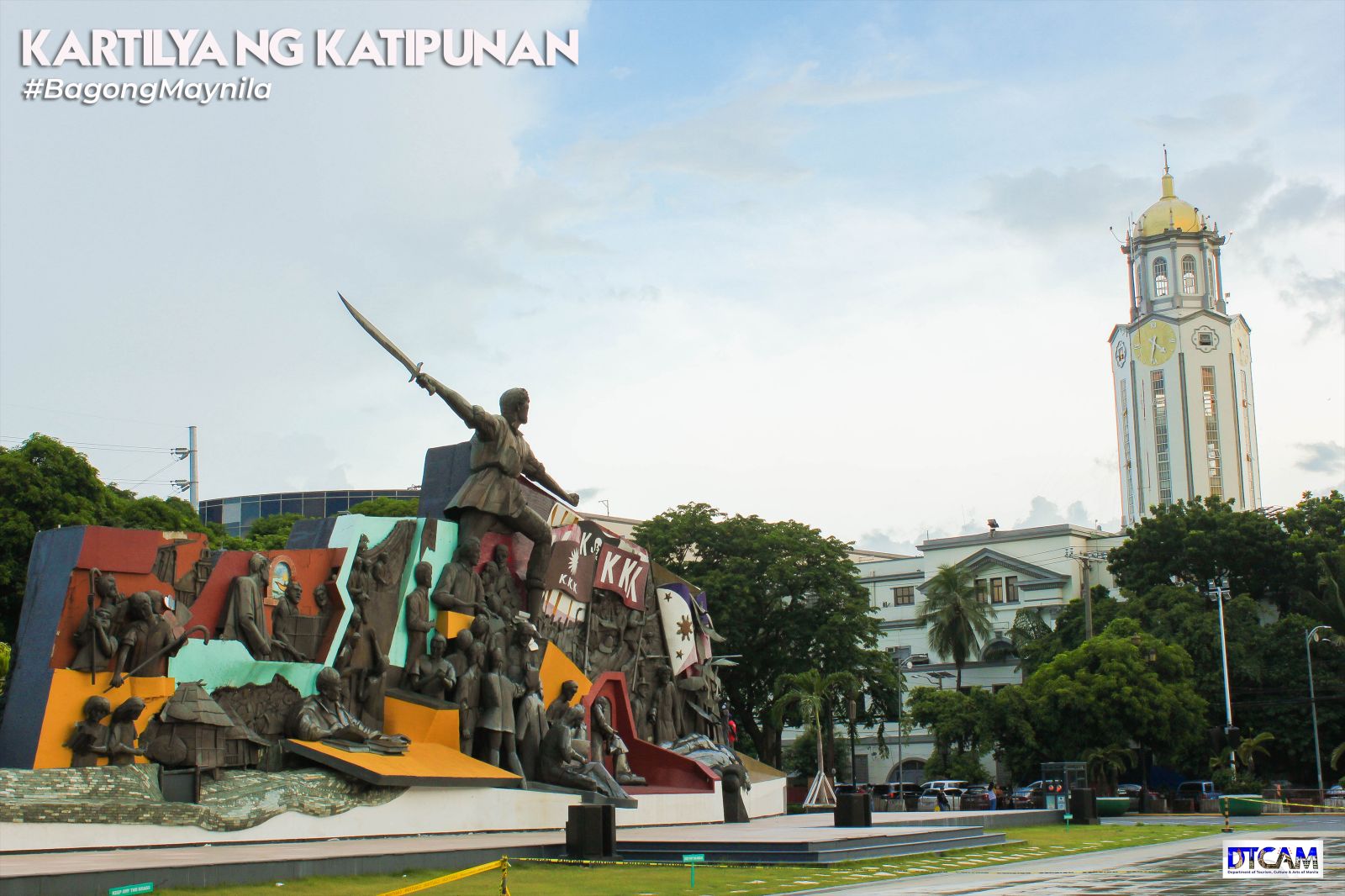
CITY: Manila City
COUNTRY: Philippines
POPULATION: 1,846,513 (Philippine Statistics Authority 2020)
JOINED: 2020
SIGNED DECLARATION: 2023 signed by Mayor Maria Shielah "Honey" Lacuna-Pangan, MD
CITY CONTACT: Department of Public Services
OFFICIAL WEBSITE: manila.gov.ph
CONNECT: dps.cityofmanila@gmail.com; facebook.com/DPSmanilacity
Manila, the capital city of the Philippines, is on the island of Luzon and is part of the National Capital Region (NCR). It comprises 896 barangays, which are divided into 100 zones and further divided into 16 administrative districts, and six congressional districts. It had a recorded population of 1,858,221 in 2020 (Philippine Statistics Authority, 2021) and has a population density calculated at 73,920 persons/km2. Manila City’s port areas are found to be the most densely populated.
Manila City is considered a prime economic area, which makes it the go-to place for Filipinos from rural areas who are in search of better employment and living standard. This continuous influx of people resulted in unemployment and several urban dysfunctions including traffic congestion, build-up of slum areas, flooding because of clogged estuaries and sewage systems, and deteriorating public facilities. From an environmental standpoint, Manila City faces difficulty in biodiversity conservation and waste management.
However, like any other congested area, Manila city finds it difficult to have well-functioning Material Recovery Facilities (MRF) primarily due to the lack of space. As stipulated in RA 9003 or the Ecological Solid Waste Management Act of 2000, barangays should have at least 50 to 100 square meters of land dedicated to this kind of facility. Such is a difficult requirement to fulfill for Manila City as barangays are often congested and this will not allow room for MRFs to be built. This has led to the setup of Materials Recovery Systems (MRS) or make-shift bins for recyclables which often cannot accommodate the waste generation of the barangays they are located in. These MRS are considered temporary solutions to the lack of MRFs designated for each barangay and thus should be shifted to fully functioning MRFs. Add to that, according to the inputs from our consultations with the barangays, the lack of funds from the barangay development budget assigned to solid waste management, the lack of secondary markets for recyclables, and the absence of technical expertise in managing such facilities are also added challenges to building more MRFs in Manila City.
The Plastic Smart Cities project is working with Manila City to achieve the goal of least a 30% reduction of plastic pollution by 2024. There will be city-wide interventions but also specific geographical areas of focus, which will depend on the results of the validation and planning with city stakeholders. Manila City’s influential standpoint and political will make it a strategic PSC – TV Aksjonen project site in Metro Manila as this can provide a solid case for inspiring other cities and municipalities in the region (Caloocan, Las Piñas, Makati, Malabon, Mandaluyong, Marikina, Muntinlupa, Navotas, Paranaque, Pasay, Pasig, Pateros, Quezon, San Juan, Taguig, and Valenzuela) and potentially in the entire country to take necessary actions to address the plastic pollution issue in their respective cities.
BASELINE DATA ANALYSIS
Waste Analysis and Characterization Study (WACS) Results showed that the current waste generation rate (WGR) of the City is about 0.707 kg/cap/day while the disposal rate (WDR) is 0.425 kg/cap/day. Most of the generated and disposed of wastes in the city are biodegradables with food waste being the highest. Plastic bags, despite being lightweight, dominate the plastic waste composition of both generated and disposed of wastes. These low-value type of plastic is problematic because they often end up in landfills or in nature due to the absence of local processing technologies.
The results of the baseline study conducted during the Inception Phase show that about 116,292 tonnes of plastic waste are annually generated. A total of 86% or 100,099 tonnes of these generated plastic wastes are collected by both formal and informal sectors while the remaining 14% or 16,193 tonnes/year of plastics are considered unaccounted. These uncollected plastic wastes are leaked into the environment.
Nevertheless, about 24% of the total generated plastic waste is unmanaged. About 13% or 15,254 tonnes of plastic waste are leaked into water systems contributing to the clogging and polluting of estuaries and river systems, 10% or 11,100 tonnes are retained on land, and the remaining are burnt or found in storm drains. A significant number of potential leakages of plastics was identified from collection services and disposal facilities of about 2,969 tonnes and 8,887 tonnes, respectively. These disposal facilities such as the Vitas Marine Loading Station and the Navotas Sanitary Landfill are located beside water systems, allowing for plastic leakage.
Upon consultation with the city’s district offices, the project has identified 461 priority barangays broken down as follows:
- District 1, 116 barangays
- District 2, 41 barangays
- District 3, 43 barangays
- District 4, 71 barangays
- District 5, 143 barangays; and
- District 6, 47 barangays.
KEY PLASTIC REDUCTION TARGETS AND GOALS WITH KEY ACTIVITIES AND PLANNED PILOT INTERVENTIONS
1. At least a 10% reduction in municipal solid waste generation
- Policy implementation
- Implementation of policies and legislation aimed at reducing and eliminating unnecessary plastics in the city.
- Development of toolkits for public officials to increase barangay-level government units' SWM compliance.
- Awareness-raising activities
- Conduct of Knowledge, Attitude, and Practice (KAP) Assessments of target stakeholders, ranging from households, businesses, academic institutions, local government offices, and the informal waste sector.
- Development of a communication plan to accommodate the SWM communication needs of target audiences.
- Production and conduct of communication activities according to the communication plan co-designed with the target stakeholders.

Design Thinking Workshop conducted by WWF-PH; attended by participants from different sectors
- Business sector engagements
- Identification of solutions for decreasing plastic waste in the business sector. Solutions may include but are not limited to the following: setting up of refilling stations, banning of unnecessary plastics, per request basis of plastics.
- Implementing solutions for plastic waste reduction in the business sector.
- Household training on solid waste management
- Improving household plastic waste collection through the conduct of solid waste management training for selected households from priority barangays.
- Deployment of trash bins to selected households and implementation of a waste monitoring scheme with barangay and district officials.

Deployed trash bins to a household SWM training participant from District 6
2. At least a 15% increase in the collection of uncollected waste
- Deployment of common trash bins to selected barangays
- Distribution of three (3) 40L trash bins per priority barangay and implementation of a waste monitoring scheme with barangay and district officials.
- Distribution of waste collection carts to barangays
- Partnering with fabricators in the creation of small waste collection vehicles to be distributed to barangays that expressed their need for such equipment.
3. At least a 15% increase in the collection of waste by collection services diverted from disposal
- Support social enterprise initiatives that will benefit informal waste pickers, women, youth, and other related sectors
- Identification of possible social entrepreneurial solutions to be implemented in Manila City through a market study
4. At least a 10% reduction in transported untreated waste
- Support existing Materials Recovery Facilities (MRF)
- Support improvement of existing and establishment of new materials recovery facilities

Materials Recovery Facility of Barangay 775
- Deployment and installation of waste utilization technologies
- Increase capacities of barangay personnel in charge
- Initiate market initiatives for plastic waste recycling
- Conduct of market study identifying market standards, needs, potentials, and barriers
- Provide support in product development and marketing of ready-to-scale-up local organizations supporting plastic waste recycling
- Identification of market opportunities for upcycled products
- Increase at-source plastic waste segregation
- Conduct of barangay solid waste management and household waste segregation learning sessions

Participants from the first installment of SWM Household Training
- Identification of model household segregators
- Provision of materials needed for household waste segregation and monitoring of results
- Pilot at-source solutions for managing food waste
- Identification and implementation of food waste reduction at-source
- Piloting solutions in utilizing and processing collected food wastes in Manila City
5. At least a 5% reduction of plastics entering water systems
- Improvement of existing river waste collection systems
- Improvement of city-installed waste collection systems in minor creeks in Manila City
- Provision of equipment such as scows needed during the collection of wastes in water systems
- Installation and operation of river waste collection systems
- Identification of applicable river waste collections systems to be installed on priority major creeks in Manila City
- Monitoring of reduction of plastic wastes entering water systems in Manila City
The Projects’ key plastic reduction targets and their corresponding activities are incorporated and visualized in the City of Manila’s Waste Flow Diagram as shown below:

CURRENT LEGISLATION
City Ordinance 8282: Plastic Ban
The City Ordinance 8282 (CO 8282) is a very general blanket prohibition policy on plastic. The law prohibits business establishments from
- Using plastic bags as packaging for dry goods;
- Using plastic bags as secondary packaging for wet goods;
- Using polystyrene for all food and goods;
- Selling plastic bags as secondary packaging material or as primary packaging material for dry goods
- Disposing of unclean or wet plastic waste for collection.
The law also includes the following prohibited acts for food & commercial businesses and individuals:
- Selling and providing plastic bags to consumers as primary packaging materials for dry goods;
- Selling and providing plastic bags to consumers as secondary packaging materials for wet goods;
- Selling and providing polystyrene packaging as containers.
Environmental Code
Under the Environmental Code, plastics, although mentioned, are not considered in a holistic manner. First, biodegradable and compostable under this Code are made synonymous with each other. Second, all plastics regardless of type are classified as non-biodegradable and treated as residuals without any value. Third, Manila’s Code does not handle fishing gear effectively.
It is recommended that the E-Code be amended to change these definitions, classifications, and exclusions. Due to the grouping of all plastics as non-biodegradable, there would be valuable plastic that can be recycled. The E-code must also be amended to include microplastics in the soil, air, and water of the City. The E-code must be aligned with sustainable consumption and production plans to ensure effective management of plastics both upstream and downstream.
The E-Code should be updated and amended upon consultation with more stakeholders and after the WACS is completed in order to reflect the true state of the City and to adapt it to local circumstances.
City Ordinance 8729: Environmental Police
The City Ordinance 8729 authorizes the deputation of environmental police under the Department of Public Services (DPS). The Environmental Police have the following powers and duties:
- Apprehend all violators of the different environmental laws and ordinances for the protection of the environment including but not limited to:
- Illegal dumping of solid waste along streets, alleys, river banks, and in any public places;
- Incineration or open burning of solid waste;
- Causing or permitting the collection of garbage not segregated and placed in approved containers;
- Illegal cutting, destroying, or injuring of planted growing trees, coastal roads, plazas, parks, school premises, or in any other public coastal ground;
- Dumping and discharging of garbage, refuse, sewer waste, debris, toxic waste, and other pollutants from vessels, factories, commercial, and industrial establishments, residential houses, and other structures into Manila Bay, the Pasig River, and other waterways and bodies of water within the territorial jurisdiction of the City of Manila;
- Disposal of garbage, debris, and other waste materials in rivers, creeks, canals, and waterways;
- Littering/Leaving trash and other refuse in the gutter, sidewalks, streets, alleyways, and roads and allowing or leaving pet animals to defecate or urinate outside their property line;
- Storing, dumping, or placing wastes, debris, junked or under-repair vehicles, dilapidated appliances, and other objects in any part of the road, street, or avenue or in any sidewalk which may impede or obstruct the vehicular and pedestrian traffic;
- Disposal of effluent and sludge from motor repair shops, motor pools, vehicle garages and terminals, car wash, and junk shop establishments into the drainage canals, creeks, rivers, or any water bodies;
- No segregated containers with which to segregate biodegradable and non-biodegradable garbage for composting and recycling purposes;
- Disposal of garbage, trash, rubbish, and refuse in open, uncovered, or unsealed containers; and
- All other prohibited acts prescribed under RA 9003 and Clean Air Act, Clean Water Act, Nipas Act, Wildlife Conservation Act, Mining Act, Forestry Code, and Face Mask Disposal Act.
- Educate people on the importance of protecting the environment and on the proper way of waste segregation and disposal.
BEST PRACTICES FROM PAST LEGISLATION
There are best practices that can be taken from the older pieces of legislation that are still being enforced in the City, and that should be kept in any future policies. Some of these include the requirement for public receptacles in public transportation, penalties for prohibited public dumping of waste in streets or waterways, requirements for clean-up drives, provisions on making fines payable to the Barangay environment fund where the violation took place, and requirements for receptacles for segregation in households.
These past policies show us that policies truly need to be accompanied by the proper implementation to be effective. These policies have been in force since 1968 and there are still violations reported by DPS to date. The penalties under these laws, since they have not been updated in many years, are outdated and easy for businesses and individuals to pay. Any policies that are crafted or amended must include provisions in order to ensure the full implementation of the law.
Related Links:
- https://www.facebook.com/DPSmanilacity/posts/pfbid029xqBXxrnptgoh7gtfhKVmV3vzJ5txG9NM5XMXkjGH8gxE2Q9efFAV9qmXTLLFE3Wl
- https://www.facebook.com/DPSmanilacity/posts/pfbid0dqMtiJz5pdaXzkTEJTg2FqVFxoF9fTKn15gF3JHEZToTMD6HUcpzrxeBCv7krZzbl
- https://www.facebook.com/DPSmanilacity/posts/pfbid02oxh4XoQmKaday7DnECDQfvKSMc2zn2MqZnMsV54WEESEJmLn9BDKcoY1ZkoMEWfhl
- https://www.facebook.com/DPSmanilacity/posts/pfbid033q8hhtRmXn6EJQk1u9t7PnegswiVJF1sheNi93zqqvfEv5bWJDroX9pgE175u8H9l
- WACS of selected Manila City esteros
- Design Thinking Workshop
- Involvement of PSC-TVA to the 4th Quarter City Solid Waste Management Board meeting
Related stories
Explore other cities in the Philippines

Geocoding Error Occured.
Tried to Geocode:
Error Type:
Please be sure to follow the tutorial on how to setup the Google APIs required for the Advanced Google Map Widget.
Google Map API Key Tutorial

